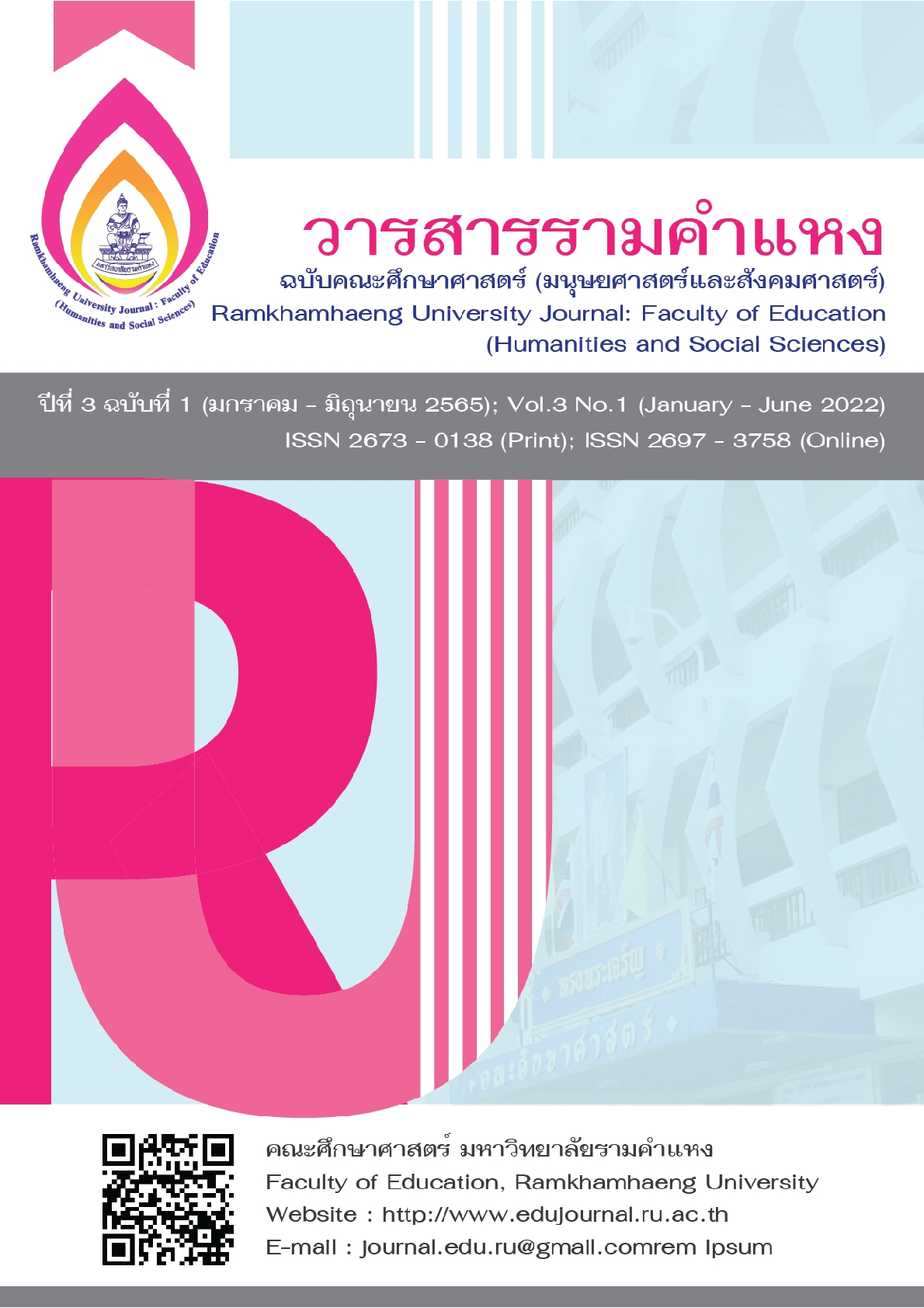The Causal Relationship Model of Private School Management for Sustainable Development
Main Article Content
Abstract
The study on the causal relationship model of private school management for sustainable development aimed to examine the important factors in the management of private educational institutions for sustainable development and to develop a causal relationship model of private school management for sustainable development. A mixed-method research design was employed in this study. In the quantitative study phase, the sample consisted of 250 private school administrators at the secondary school level and 250 vocational and tertiary education students, for a total of 500 participants, who were selected using stratified selection and a random sampling technique. A questionnaire was used to collect data during this phase. In the qualitative study phase, an in-depth interview with 9 experts was undertaken using the purposive sampling technique, and a structured questionnaire was used as the data collecting instrument. The data was statistically analysed by SD, T-test and AMOS for in-depth findings.
The findings revealed as follows; (1) for the causal factors of private school administration for sustainable development, private school administrators, as participants, expressed a high level of overall importance. When considering each aspect, it was found that the organizational structure factors were the most important factors in the management of private educational institutions for sustainable development at a high level, followed by the human resource factor, organizational management factors, leadership factors, and planning factors at a high level, respectively. (2) The causal relationship model of private school management for sustainable development found that (2.1) the organizational management factors directly influenced the organizational structure factors at a weight of 0.30. It also directly influenced the strategic factor at a weight of 0.31 and directly influenced the human resource factor at a weight of 0.87, all of which were statistically significant at the level of .01. (2.2) The human resources factors directly influenced the strategic factors at a weight of 0.70. It also directly influenced the organizational structure factors at a weight of 0.71 and directly influenced the leadership at a weight of 0.99, with a statistically significant level of .01.
Downloads
Article Details

This work is licensed under a Creative Commons Attribution-NonCommercial-NoDerivatives 4.0 International License.
ผู้ส่งบทความ (และคณะผู้วิจัยทุกคน) ตระหนักและปฎิบัติตามจริยธรรมการวิจัยอย่างเคร่งครัด ทั้งนี้บทความ เนื้อหา ข้อมูล ข้อความ ภาพ ตาราง แผนภาพ แผนผัง หรือข้อคิดเห็นใดๆ ที่ปรากฎในบทความ เป็นความคิดเห็นและความรับผิดชอบของผู้ส่งบทความ กองบรรณาธิการไม่จำเป็นต้องเห็นตามเสมอไป และไม่มีส่วนรับผิดชอบใดๆ โดยถือเป็นความรับผิดของของเจ้าของบทความเพียงผู้เดียว
References
Akbar, A. (2012). The role of leadership in human resource management-proposing conceptual framework of advanced leadership model. Interdiscriplinary Journal of Contemporary Research in Business, 4(6), 979-989.
Arbuckle, J. L. (2011). AMOS 20.0 users guide. Crawfordville: Amos Development Corporation.
Hashmi, K. (2014). Human resource management strategies and teacher’s efficiency within schools: A co-relational study. The IAFOR Journal of Education, 2(1), 65-87.
Herbert, H. G., & Gullett, C. R. (1967). Management. New York: McGraw–Hill.
John, N. (2015). Strategies for effective school leadership. Global Journal of Education Studies, 1(1), 45-51.
Korbi, K. (2015). Leaership and strategic change. The Journal of Organizational Management, 7(2), 28-39.
Lunenburg, F. C. (2011). Leadership versus management: A key distinction a least in theory. Interdiscriplinary Journal of Contemporary Research in Business, 14(1), 1-4.
Ministry of Education, Office of the Education Council Secretariat. (2015). Competency in Thai education in the international arena 2015. Bangkok: Author. [In Thai].
Office of the National Primary Education Commission. (2017). Research Report for Developing Quality Assurance System in Educational Institutions. Bangkok: Author. [In Thai].
Phonprasert, W. (2011). Concepts of strategic management. Retrieved October 30, 2021, from http://www.stou.ac.th/Schools/Shs/upload/หน่วยที่1ชุดวิชา%2058708.pdf [In Thai].
Rothaermel, F. T. (2013). Strategic management: Concepts and cases. New York: McGraw-Hill.
Saratana, W., & Saratana, A. (2002). Management factors and learning organization proposal of research results for development and criticism. Bangkok: Aksara Phiphat. [In Thai].
Smith, M. (1971). Educational leadership: Culture and diversity. Gateshead: Athenaeum Press.
Stoner, A. F., & Wankel, C. (1986). Management (3rd ed.). New Delhi: Prentice Hill.
Suphachok-udomchai, T., Jindasamutra, P., Chalakbang, W., & Hamsupo, S. (2015). Educational administration strategy to enter into the ASEAN community for the implementation by schools under the offices of secondary education service areas in the Northeast of Thailand. Journal of Education Graduate Studies Research, Khon Kaen University, 9(1), 25-34. [In Thai].
Tippamom, S., Phengsawat, W., Chalakbang, W., & Satheannopakaow, P. (2016). A development of strategic administration model affecting the effectiveness of middle-sized school under the office of secondary educational service area office in the Northeast Thailand. Ratchaphrurk Journal, 14(3), 114-131. [In Thai].
Tonwimonrat, S. (2015). Administrative model of provincial university library network forInnovative organization. Veridian E-Journal, Silpakoen University, 8(1), 88-128. [In Thai].
Wheelen, L. T., & Hunger, J. D. (2012). Strategic management and business policy: Toward global sustainability (13th ed.).
Boston: Pearson. Yougjin, S. (2013). Elements of strategic management process and performance management systems in U.S. federal agencies: Do employee managerial levels matter. International Journal of Business and Management, 8(9), 114-129.
Yukl, G. (1998). Leadership in organization. Englewood Cliffs, NJ: Prentice Hall.


